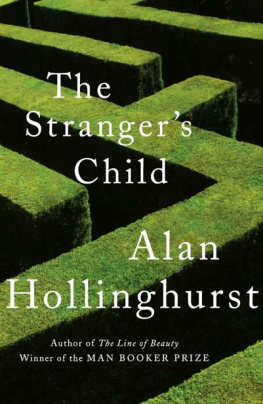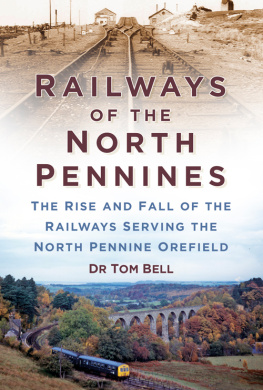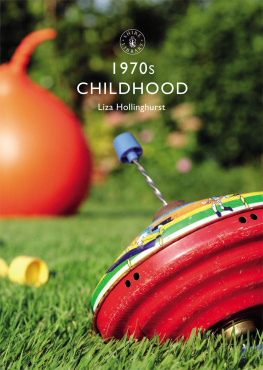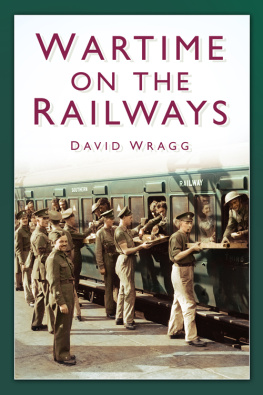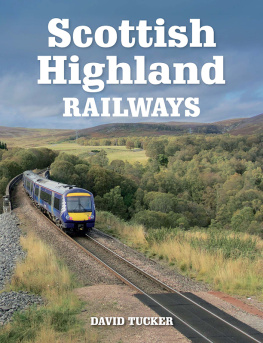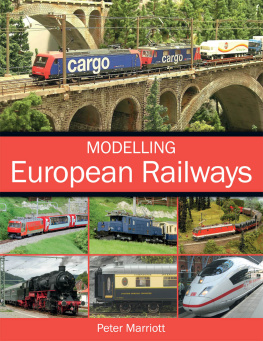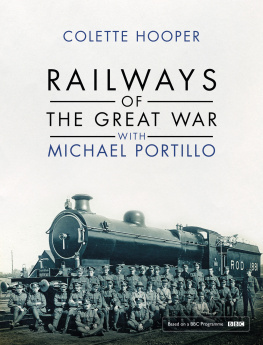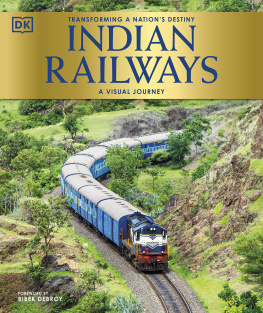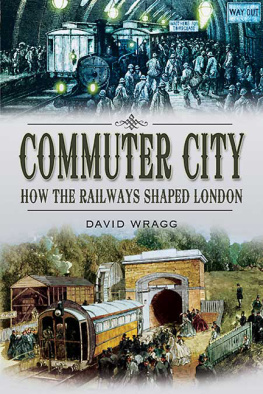Hollinghurst - Liverpools Railways Through Time
Here you can read online Hollinghurst - Liverpools Railways Through Time full text of the book (entire story) in english for free. Download pdf and epub, get meaning, cover and reviews about this ebook. year: 2015, publisher: Amberley Publishing, genre: Home and family. Description of the work, (preface) as well as reviews are available. Best literature library LitArk.com created for fans of good reading and offers a wide selection of genres:
Romance novel
Science fiction
Adventure
Detective
Science
History
Home and family
Prose
Art
Politics
Computer
Non-fiction
Religion
Business
Children
Humor
Choose a favorite category and find really read worthwhile books. Enjoy immersion in the world of imagination, feel the emotions of the characters or learn something new for yourself, make an fascinating discovery.

- Book:Liverpools Railways Through Time
- Author:
- Publisher:Amberley Publishing
- Genre:
- Year:2015
- Rating:5 / 5
- Favourites:Add to favourites
- Your mark:
- 100
- 1
- 2
- 3
- 4
- 5
Liverpools Railways Through Time: summary, description and annotation
We offer to read an annotation, description, summary or preface (depends on what the author of the book "Liverpools Railways Through Time" wrote himself). If you haven't found the necessary information about the book — write in the comments, we will try to find it.
Liverpools Railways Through Time — read online for free the complete book (whole text) full work
Below is the text of the book, divided by pages. System saving the place of the last page read, allows you to conveniently read the book "Liverpools Railways Through Time" online for free, without having to search again every time where you left off. Put a bookmark, and you can go to the page where you finished reading at any time.
Font size:
Interval:
Bookmark:
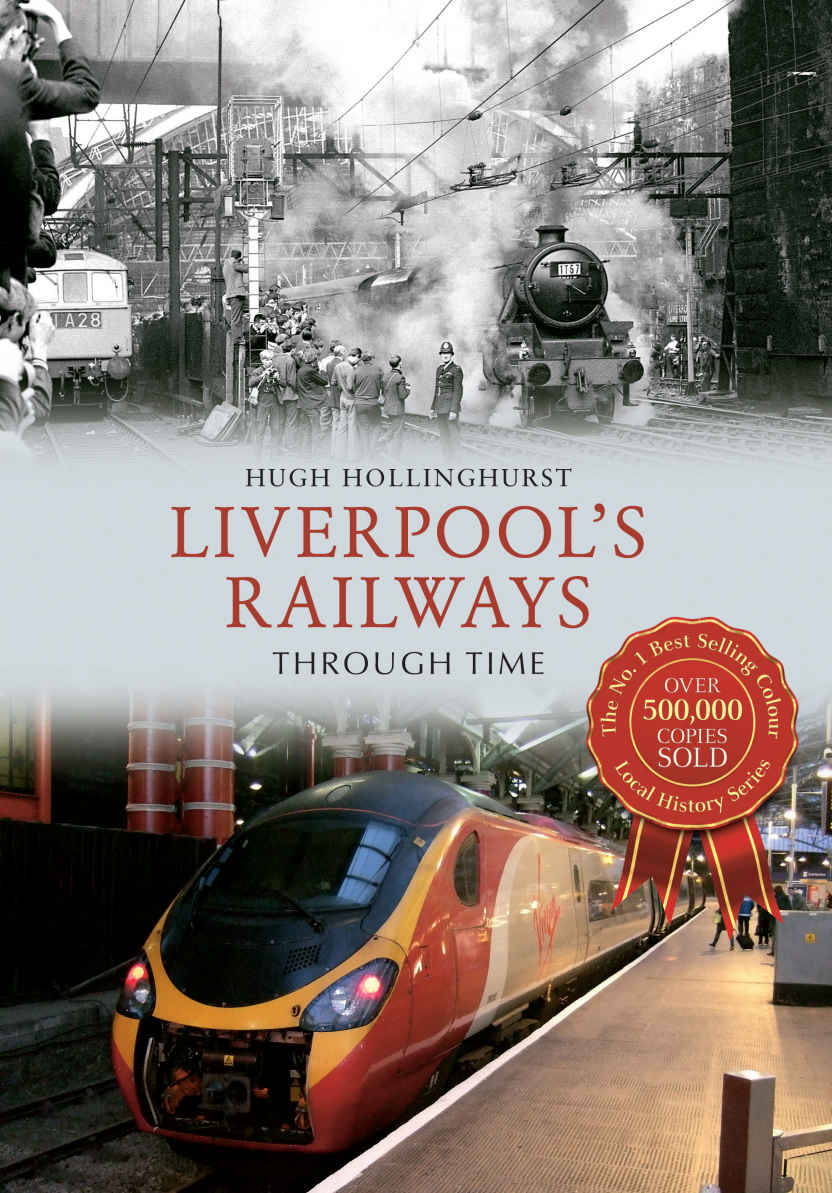

To the Liverpool Record Office and especially Roger Hull for their help and use of archive photos on the following pages: 6, 8, 9, 11, 12, 14, 15, 17, 18 (2), 19, 26 (2), 27, 31, 45 (British Railways Board), 48, 49, 60, 61, 64, 72, 86, 87, 92, 96.
To the Sefton Library Service and especially Dave Ewing and the Local History section at Crosby Library for their help and use of archive photos on the following pages: back cover, 16, 29, 34, 39 (2), 40, 44, 50, 51 (2), 52, 56, 57, 59, 63, 76, 88 (2), 89.
Credits to Alex Appleton photograph, copyright Industrial Railway Society: 68; Zorina Barrett: 24 (inset); John H. Southern-images.co.uk: front cover (upper), 10 (lower); Ben Brooksbank Copyright and licensed for reuse under this Creative Commons Licence: 33, 38; Crosby and District Historical Society: 35, 41; The Engineer: 72; Graeme Gleaves (Coventry Electric Railway Museum): 42, 74; Roger Golder archive photos: 13, 21, 22 (2), 23 (2), 24 (2), 25 (inset), 30, 31, 32, 41 (inset), 42 (lower), 46, 47 (2), 53, 54, 55, 62, 70, 93, 94, 95; Ray and Margaret Harley: 58; Albert Hawarth: 37; Hugh Hollinghurst: all other modern photos; Paul Hollinghurst: front cover (lower),14, 15, 19, 21, 28 (lower), 40, 41, 43 (2), 44 (inset), 49 (inset), 53, 54 (lower), 59, 67, 71 (inset), 72, 74 (2), 91 (lower), 92 (inset), 94 (inset), 95, 96; P. Kerwin: 20 (lower); Peter Levick: 73, 85; Manchester Archives and Local Studies: 10;Merseyrail: 8, 31, 43 (inset); D. J. Norton: 75, 77, 78, 79, 80, 81, 82, 83, 84, 90 (lower); Online Transport Archive: 7 (2) (Charles Roberts), 25 (E. V. Richards), 25 (Brian Faragher); Peter Owen: 36, 41; Jim Peden photographs, copyright Industrial Railway Society: 66, 67 (2), 68, 69 (2), 70, 71, 78 (inset), 79 (inset), 86 (lower), 87(lower), 93 (inset); Ribble Steam Archives: 68, 70 (inset); Pat Thomas: 60 (lower); Mike Treanor: 80 (lower); Trinity Mirror: 34; Bill Turpin: 76.
To Jonathan Cadwallader and Peter Levick, who have helped me in my research, and John Quirk, who has also proofread the text.
To the following publications:
Paul Anderson: An Illustrated History of Liverpools Railways.
Paul Bolger: The Dockers Umbrella.
John W Gahan: Line Beneath the Liners; Rails to Port and Starboard; Seaport to Seaside; Seventeen Stations to Dingle.
Above all to my wife Joan who has proofread and been a great source of encouragement and an example of patience and understanding.
First published 2015
Amberley Publishing
The Hill, Stroud, Gloucestershire, GL5 4EP
www.amberley-books.com
Copyright Hugh Hollinghurst, 2015
The right of Hugh Hollinghurst to be identified as the Author of this work has been asserted in accordance with the Copyrights, Designs and Patents Act 1988.
ISBN 9781445644967 (PRINT)
ISBN 9781445645162 (eBOOK)
All rights reserved. No part of this book may be reprinted or reproduced or utilised in any form or by any electronic, mechanical or other means, now known or hereafter invented, including photocopying and recording, or in any information storage or retrieval system, without the permission in writing from the Publishers.
British Library Cataloguing in Publication Data.
A catalogue record for this book is available from the British Library.
Typesetting by Amberley Publishing.
Printed in Great Britain.
The Liverpool and Manchester Railway opened in 1830 and was the first inter-city line in the world, carrying both passenger and freight traffic and hauled by steam. The preceding year had witnessed a key event in the industrial revolution when trials were held in nearby Rainhill to consider the feasibility of steam power. The competition was won by George Stephensons Rocket, the prototype of standard steam locomotive design ever since. The opening of the line, a national event, was marred by the first widely reported death in a railway accident. One of Liverpools two MPs, William Huskisson, was mown down by the Rocket when he was attempting to heal a quarrel with the then Prime Minister, the Duke of Wellington. The locomotives finished their run at a gateway to Liverpool formed by a Moorish Arch designed by the eminent Liverpool architect John Foster Junior near Edge Hill. From that point, cable-hauled trains were hauled through tunnels to two termini: one up to a passenger terminus at Crown Street and a second one down to a goods terminus at Wapping. Crown Street became a goods yard when the line was extended in 1836 to Lime Street in the city centre from Edge Hill, billed as the longest surviving continuously operated station in the world. Lime Street was built with the first proper train shed constructed of iron and glass fronted by a magnificent screen in classical style, which made the perfect accompaniment to St Georges Hall a few years later.
The year 1848, the Year of Revolution in Europe, witnessed great changes in the Liverpool railway scene too. The Lancashire and Yorkshire Railway (LYR) opened its line from Bury and Wigan, terminating at Exchange Station on Tithebarn Street. In the same year, the Liverpool, Crosby and Southport Railway was opened from Southport as far as Crosby to be extended two years later to join the LYR line. Work was also in progress on the East Lancashire Railway, opened the following year, which ran from Walton Junction on the LYR line to Preston. Also under construction and opened that same year were the Waterloo and Victoria tunnels connecting Edge Hill to Waterloo Dock. These were built by the London and North Western Railway (LNWR), which had been formed from an amalgamation of the Liverpool and Manchester Railway and other companies. It is a measure of the confidence in investment in the region at the time that all these schemes progressed in spite of the collapse of the Railway Mania in the mid-1840s.
During the next fifty years, there was enormous expansion in the provision for freight traffic to and from the docks. The LNWR and the LYR vied with each other constructing branches from their main lines to no less than five goods stations for the north docks, one of them involving the construction of the LNWR inner ring line from Edge Hill to Bootle. The Cheshire Lines Committee (CLC), a consortium of companies including the Midland Railway, built Brunswick goods depot in the south in conjunction with its line from Manchester through to Central Station, which was opened in 1874. It then ambitiously constructed an outer ring line running through West Derby to Aintree with a branch to Huskisson Goods Station. This line facilitated the Midland Railways invasion of LNWR and LYR territory with Sandon and Langton goods branches in the north. Later, the CLC line was extended to Southport in unsuccessful competition with the more direct LYR line through Crosby.
In addition to these goods depots, from 1873 the LNWR built a vast freight complex at Edge Hill with a gridiron marshalling yard that attracted attention from all over the world. The LYR also constructed a huge yard at Aintree. All along the docks, the Mersey Docks and Harbour Board had developed their own intricate system of freight lines and with it grew the need of a line to convey the dockers along the length of the docks. This had to be above ground to avoid conflict with the dock railway network and so the Overhead Railway was born. Constructed along the line of the docks in 1893, it was the worlds first electrified overhead railway with the first automatic signalling and electric signal lights. When it was extended both ends between 1894 and 1905 to encourage tourist and through traffic, Seaforth Sands Station boasted of the second escalator in the country. Meanwhile in 1886, the Mersey Railway had opened up a new direction of communication by burrowing under the river to Birkenhead and the Wirral, the worlds first deep-level underground line, the first under a tidal river and the first railway in Britain to be converted from steam to electricity (in 1903). The Liverpool to Southport route followed soon after to be the first main line in the country to be electrified.
Font size:
Interval:
Bookmark:
Similar books «Liverpools Railways Through Time»
Look at similar books to Liverpools Railways Through Time. We have selected literature similar in name and meaning in the hope of providing readers with more options to find new, interesting, not yet read works.
Discussion, reviews of the book Liverpools Railways Through Time and just readers' own opinions. Leave your comments, write what you think about the work, its meaning or the main characters. Specify what exactly you liked and what you didn't like, and why you think so.

